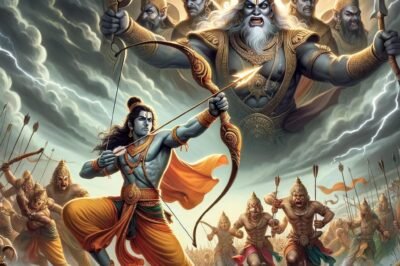Indian mythology is one of the richest and most intricate storytelling traditions in the world. With a history spanning thousands of years, the mythology of India is deeply embedded in its culture, religion, and philosophy. The storytelling traditions of Indian mythology, passed down through oral narratives, poems, and texts, have shaped the country’s identity, offering moral lessons, spiritual insights, and cultural continuity. From the grand Indian epics like the Mahabharata and Ramayana to the everyday folk tales, the art of storytelling remains a cornerstone of Indian culture and stories.
The Richness of Indian Mythological Storytelling
The heart of Indian mythology lies in its ability to convey universal truths through the lives of gods, heroes, and demons. The Indian epics, Ramayana and Mahabharata, are two of the most famous examples, each filled with complex mythological characters like Rama, Sita, Arjuna, and Krishna. These characters embody timeless human values, such as righteousness, loyalty, and courage. Their stories, though mythical, mirror the dilemmas and moral choices people face in everyday life.
The way these epics are narrated varies across regions and languages, reflecting the diversity of Indian culture and stories. While written forms of these epics exist, their original form was oral storytelling, where storytellers would recount the tales to captivated audiences, ensuring that these lessons were preserved and passed down through generations.
Oral Storytelling: The Tradition of Passing Down Myths
Oral storytelling has played a crucial role in keeping Indian mythology alive. Before written records, these stories were memorized and performed by storytellers, often accompanied by music and dance. This practice not only preserved the tales but also allowed each storyteller to add their own style or local flavor to the retelling. In regions like Kerala, for example, the Kathakali dance-drama brings episodes from the Mahabharata and Ramayana to life through elaborate performances, while in other parts of India, local bards recount mythological stories in regional languages, adapting them to fit cultural contexts.
The flexibility of oral storytelling ensured that Indian myths remained relevant and relatable to people from all walks of life. These stories didn’t just serve as entertainment; they carried moral and philosophical teachings, helping listeners navigate their own personal and spiritual journeys.
The Role of Mythological Characters in Shaping Indian Values
The mythological characters of Indian epics and stories serve as moral exemplars, guiding people in their understanding of virtues like duty (dharma), sacrifice, and justice. In the Ramayana, Rama is portrayed as the ideal king and person, embodying dharma by choosing to exile himself to honor his father’s word. Similarly, in the Mahabharata, Arjuna’s internal struggles and Krishna’s guidance offer profound lessons on duty, detachment, and righteousness.
These mythological characters often represent larger-than-life qualities but remain deeply human in their emotions and decisions. This balance between divinity and humanity makes Indian myths timeless, as the characters’ journeys reflect the personal and social dilemmas that are still relevant today.
Indian Culture and Stories: Preserving Mythology through Generations
The stories from Indian mythology are more than just tales of gods and heroes; they are part of the cultural fabric that connects people to their heritage. Festivals like Diwali, Dussehra, and Janmashtami celebrate key episodes from the Indian epics, blending storytelling with cultural practices and traditions. Through these celebrations, Indian culture and stories are continuously passed down, keeping the mythology alive and relevant in modern times.
Even in contemporary India, mythological tales continue to inspire art, literature, and cinema. From comic books to blockbuster films, Indian mythology remains a powerful tool for storytelling, evolving with the times while retaining its core values.
Conclusion: The Everlasting Power of Indian Mythology
The art of storytelling in Indian mythology is a testament to the country’s rich narrative tradition. Whether through oral storytelling or written texts, these stories have shaped Indian culture and stories, providing timeless lessons through complex mythological characters and epic tales. As India evolves, its mythology continues to inspire and guide, proving that the power of storytelling transcends time and remains integral to the nation’s identity.








Leave a Reply